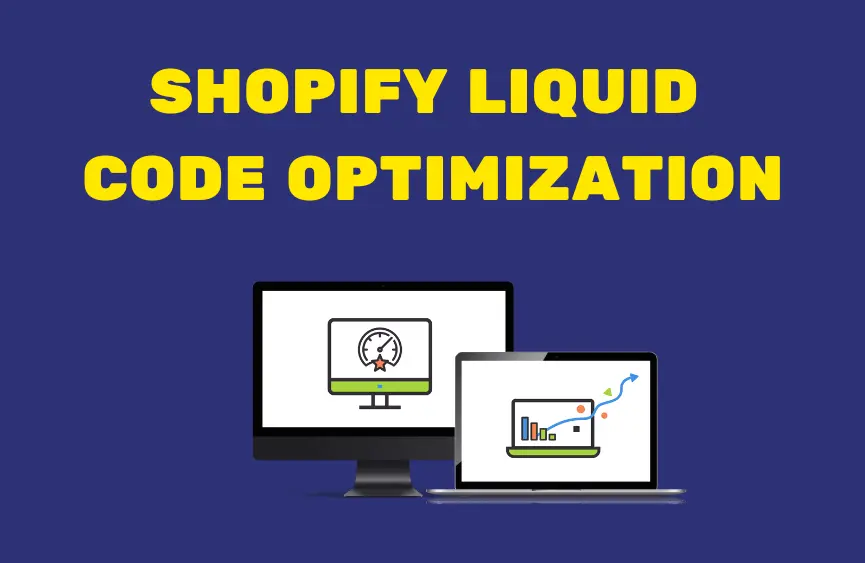Why you should optimize liquid code?
There are several reasons why you should optimize your Shopify Liquid code:
- Your e-commerce site’s performance can be improved if you optimize Shopify Liquid code behind it. Better user engagement and conversion rates are possible outcomes of a website that is quick to load.
- A faster-loading website is more likely to be recommended by search engines, which can increase your website’s search engine rating and result in more organic visitors.
- Reduced Bounce Rates One of the most popular causes of high bounce rates is slow website performance. Reduce your website’s bounce rate by giving your users a better experience by optimize Shopify Liquid code.
- Better User Experience: A faster and responsive website can give a better user experience for your visitors, making it more likely that they will return to your site in the future.
- Increased Conversion Rates: A fast and responsive website can also lead to increased conversion rates, as customers are more likely to make a purchase when they have a good experience on your site.
- Reduced Server Load: By optimize Shopify Liquid code, can also help reduce server load, which can lead to lower costs for your business and improved scalability for your website.

Here are steps to optimize Shopify Liquid code:
- Minimize liquid logic: Use liquid logic only where necessary and avoid complex logic in your templates.
- Cache liquid output: Use the
cachetag to cache frequently used data and reduce the number of database queries your site makes. - Use include files: Create include files for frequently used code snippets, such as headers and footers, and include them in your templates using the
includetag. - Use liquid arrays and loops efficiently: Use liquid arrays and loops to iterate over data efficiently, and avoid using multiple loops where a single loop will suffice.
- Minimize the use of liquid tags: Minimize the use of liquid tags, such as
caseandif, in your templates and use them only where necessary. - Use variables: Use variables to store data and reduce the number of database queries your site makes.
- Optimize liquid filters: Use filters such as
firstandlastto limit the number of items returned, and use filters such asmapandreduceto manipulate arrays efficiently. - Use Shopify’s built-in liquid objects: Use Shopify’s built-in liquid objects, such as
product,collection, andcart, instead of custom objects to take advantage of Shopify’s optimized implementation.
Note: Before making any changes to your site’s Liquid code, it’s a good idea to backup your site and test changes in a development environment before implementing them on your live site. If you want to learn more SEE and here also.
FAQ’S
Precautions to Consider While optimize Shopify Liquid code
- Back up your code: Before making any changes to your Shopify Liquid code, make sure to back up your current code. This will ensure that you have a backup in case something goes wrong during the optimization process.
- Test changes on a staging environment: It is important to test any changes to your Shopify Liquid code on a staging environment before making them live on your production site. This will allow you to ensure that your changes do not break any existing functionality or cause any negative effects on your website.
- Avoid making drastic changes: Avoid making drastic changes to your Shopify Liquid code all at once. Instead, make small, incremental changes and test them before making more changes. This will help minimize the risk of causing any unintended consequences.
- Keep an eye on page load time: Make sure to monitor your page load time after making any changes to your Shopify Liquid code. If your page load time becomes slower, it may be an indication that your optimization efforts are having a negative impact on performance.
- Be mindful of code bloat: When optimizing your Shopify Liquid code, be mindful of code bloat. This occurs when code is added to your site that is not necessary and can slow down your website.
- Stay up-to-date with Shopify updates: It is important to stay up-to-date with any updates from Shopify, as these updates may impact your optimization efforts. Regularly check for updates and make any necessary changes to your Shopify Liquid code to ensure that your site remains optimized.
Conclusion
Optimize Shopify Liquid code is crucial for ensuring the smooth and efficient performance of your online store. By following the best practices mentioned in this article, such as minimizing the use of Liquid tags and logic, using caching, and optimizing images, you can significantly improve the speed and user experience of your store. Additionally, keeping your code organized and well-structured can make it easier to maintain and troubleshoot in the future. Implementing these optimizations can help you provide your customers with a fast and seamless shopping experience, and ultimately increase conversions and sales for your business.
